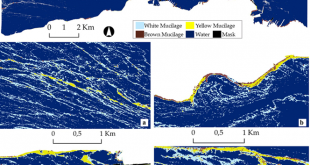ISPRS Int. J. Geo-Inf. 8(3), 139
Dynamic Land Cover Mapping of Urbanized Cities with Landsat 8 Multi-temporal Images: Comparative Evaluation of Classification Algorithms and Dimension Reduction Methods
Alganci, U
Abstract: Uncontrolled and continuous urbanization is an important problem in the metropolitan cities of developing countries. Urbanization progress that occurs due to population expansion and migration results in important changes in the land cover characteristics of a city. These changes mostly affect natural habitats and the ecosystem in a negative manner. Hence, urbanization-related changes should be monitored regularly, and land cover maps should be updated to reflect the current situation. This research presents a comparative evaluation of two classification algorithms, pixel-based support vector machine (SVM) classification and decision-tree-oriented geographic object-based image analysis (GEOBIA) classification, in producing a dynamic land cover map of the Istanbul metropolitan city in Turkey between 2013 and 2017 using Landsat 8 Operational Land Imager (OLI) multi-temporal satellite images. Additionally, the efficiencies of the two data dimension reduction methods are evaluated as part of this research. For dimension reduction, built-up index (BUI) and principal component analysis (PCA) data were calculated for five images during the mentioned period, and the classification algorithms were applied on data stacks for each dimension reduction method. The classification results indicate that the GEOBIA classification of the BUI data set provided the highest accuracy, with a 91.60% overall accuracy and 0.91 kappa value. This combination was followed by the GEOBIA classification of the PCA data set, which highlights the overall efficiency of the GEOBIA over the SVM method. On the other hand, the BUI data set provided more reliable and consistent results for urban expansion classes due to representing physical responses of the surface when compared to the data set of the PCA, which is a spectral transformation method.

Available Online: https://www.mdpi.com/2220-9964/8/3/139
 UHUZAM İTÜ – Uydu Haberleşme ve Uzaktan Algılama UYG-AR Merkezi
UHUZAM İTÜ – Uydu Haberleşme ve Uzaktan Algılama UYG-AR Merkezi 